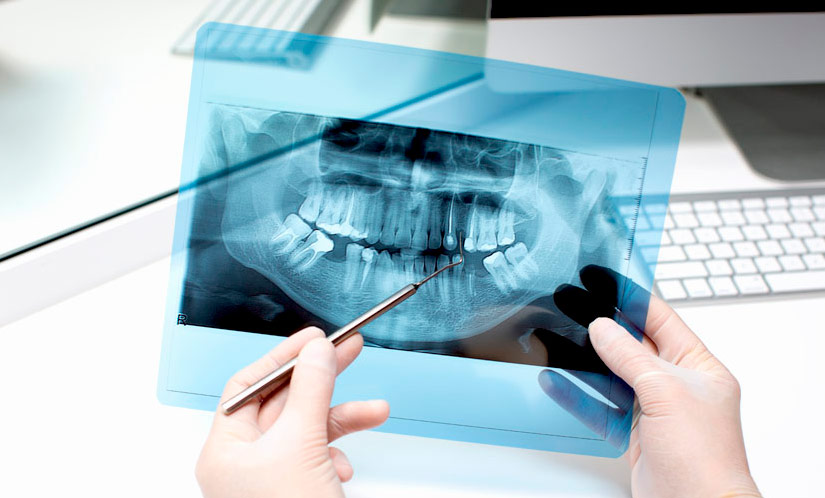Root canal in Mexico: 5 things you should know

What is a root canal procedure?
A root canal is one of the most frequently performed dental procedures, with more than 15 million done each year. This Procedure is used mainly to treat the tooth when the inner part of it is infected. The term ‘root canal’ refers to the hallow part of the tooth which houses blood vessels, the nerve tissue, and other cells. It is usually known as the pup. Tooth pulps are essential during the development of teeth. They help in nourishing the tooth by providing moisture to the surrounding materials. The nerves in the pulp, help in sensing hot or cold temperatures as pain.
When the nerve and/or pulp of a tooth become infected following an injury or due to decay or a cracked tooth, we remove them, and then seal the tooth to prevent more damage and future infection. It may sounds like a very difficult procedure, but modern technology allow us to be quick and precise.
Root canal prices in Mexico are very reasonable. If you need more information you can contact us at any moment.
Dr. García has great experience with root canal therapy, also he’s familiar with the most modern techniques and count with the best equipment.
What are the types of root canal procedures?
Root canal procedure has been around since 1838. Over the years it has evolved to the point that it is almost painless and takes a relatively small amount of time. The process follows 3 steps: cleaning the tooth, filling the root canal, adding the crown.
Still, depending on the problem there different procedures used by endodontists to treat root canal:
- Nonsurgical primary root canal treatment: is carried out for managing the infection or inflammation in the tooth.
- Secondary root canal treatment: this is necessary when the problem was not solved by the primary procedure.
- Apicoectomy: is a microsurgical procedure in which the infected tissue and tip of the root of the tooth are removed. This is required on the failure of the regular root canal treatments.
- Pulpotomy – It is generally performed on a child for the removal of the nerve and diseased pulp from the crown of the tooth.
- Pulpectomy – it is also a pediatric endodontic procedure. It is done when the whole pulp is required elimination.
Is a root canal procedure painful?
While the procedure may sound painful, modern technology has evolved to the extent that it is similar to having a filling placed in your tooth.
According to the American Association of Endodontists you can expect to have some mild to moderate pain or soreness in the area after a root canal treatment. It’s not uncommon for people to have a sore jaw after going through the procedure; since the procedure requires them to have their mouths open for a longer period.
When can I travel by air after a root canal procedure?
If you are worried because you need to travel by air right after having a root canal procedure, there’s nothing to worry. Once your root canal is complete it is recommended to wait between 5 and 7 days to avoid post pain.
What care is required after a root canal procedure?
- Plan meals carefully for the first few days after the procedure in order to avoid pain. Consider things that are nutritious without requiring a lot of chewing.
- Avoid exercise for a few days to avoid complications until your dentist allows it. Once you are back to the gym, look for routines recommended for people recovering from surgery.
- Get as much sleep as possible so you’ll experience a quick recovery and go back to feeling like yourself again.
Root Canal Vs. Dental Implant: Save or Replace my Tooth?
When patients are experiencing great pain or their teeth show extensive decay, the specialist may recommend to get a dental implant or root canal to fix the issue.
.
- Root canal: when you get a root canal, your dentist can save your tooth by removing the infected pulp and filling it with a replacement material.
- Dental implant: on the other hand, requires removing your original tooth and installing a metal post in your jawbone.
Both procedures have their benefits and downsides. The specialist will recommend the right one for each case.
What to eat after root canal?
After a root canal procedure you are not going to be able to eat all kind of food, you will need to find foods that are soft and fulfilling.
These are some foods and drinks that you can add to your diet after getting dental surgery:
- Avocado
- Caceroles
- Eggs
- Fish
- Macarroni
- Oatmeal
- Spaghetti
- Tea
- Vegetables
- Yogurt
These are all, nutritious foods that are delicious, good for the body and easy to eat. You can have them on any combination you want, as long as you feel comfortable consuming them.
If you are interested in root canal prices in Mexico, please be so kind to contact us:
52 (624) 146 9625
Sources

